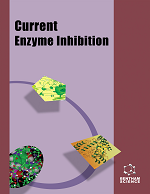-
s Effects of N224 Glycosylation in Saccharomycopsis fibuligera R64 α-Amylase on Enzyme Activity and Stability
- Source: Current Enzyme Inhibition, Volume 17, Issue 3, Oct 2021, p. 188 - 195
-
- 01 Oct 2021
Abstract
Background: The amino acid sequence of an α-amylase of the yeast Saccharomycopsis fibuligera R64 (SfamyR64) contains two putative N-linked glycosylation sites N153 and N224. N224 is hypothetically responsible for the binding of starch substrate because it is highly conserved among SfamyR64 homologs. Objective: To test whether N224 plays a key role in enzyme activity and stability. Methods: N224Q substitution was introduced by site-directed mutagenesis. The wild type and the mutant were independently over-produced in Pichia pastoris KM71. Activities of the wild type and of the mutant were compared, and their thermal-stability was assessed using heat treatments. The evolutionary relationship of SfamyR64 with its structural homologs with different glycosylation patterns was examined. Results: Activity of the N224Q mutant was approximately 80% lower than that of the wild type. The mutant showed no activity after 10 min of pre-incubation at 50 °C, whereas the wild type SfamyR64 showed activity until 30 min of treatment. Sfamy appeared to have evolved earlier than its structural homolog. Conclusion: SfamyR64 N224 is crucial for enzyme activity and thermal stability. This glycosylation site is unique for fungal and bacterial α-amylases.


